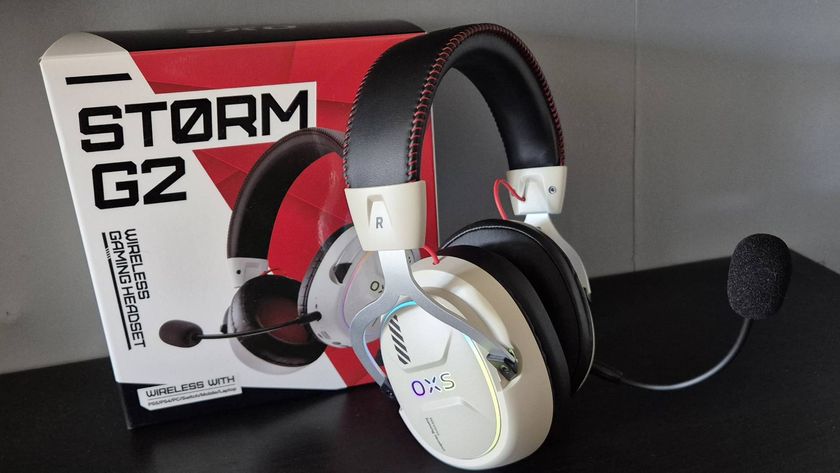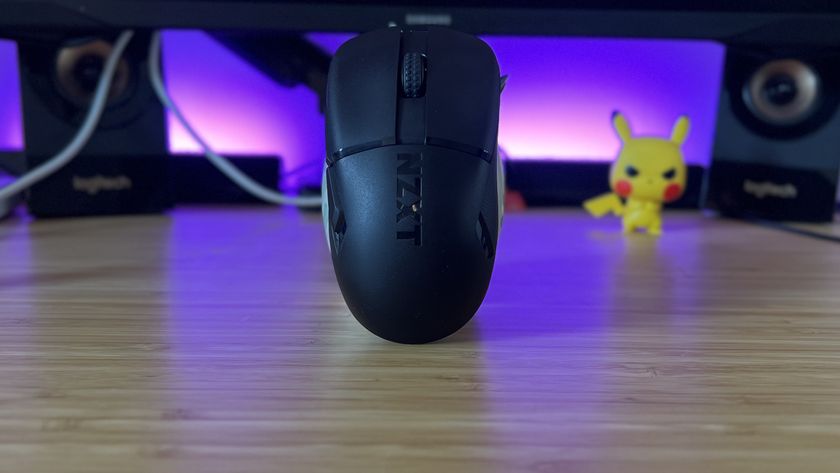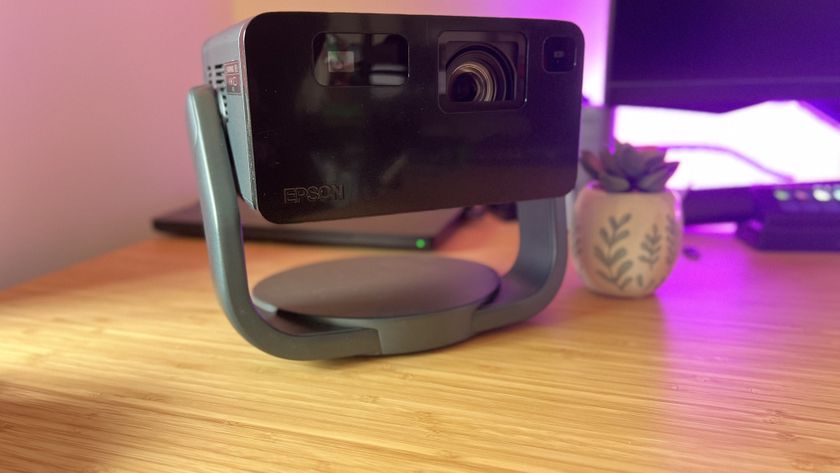12DOVE Verdict
An incredibly comfortable, high performance gaming mouse that's one of the best large mice you can buy
Pros
- +
Conforms to the hand for incredible comfort
- +
Powerful sensor configurable for different surfaces
- +
Blend of materials tailored to different panels of the mouse
Cons
- -
Right-handed only
- -
Slightly heavy for a wired mouse
Why you can trust 12DOVE
Corsair has been making great strides in optimizing and modernizing their now expansive line of gaming mice, and the Ironclaw RGB (MSRP $59.99/£54.99) just announced on the CES stage is one of their best yet. It's also one of the largest mice in their stable, suited mostly for gamers with larger hands, though even in smaller hands it doesn't feel overwhelmingly large or difficult to wrangle. It's comfortable, performs extremely well, and has some some handy quality of life software features that let you tailor it to suit your personal environment and aesthetic. It's an immediate inclusion in our best gaming mouse roundup and the best larger mouse to be released in recent memory.
Corsair Ironclaw RGB - Design

The curves and contours of the Ironclaw immediately feel natural and comfortable under your hand. The dramatic cut-in on the left side allows you to rest your thumb in a natural, neutral position that won't add undue strain to your wrist or forearm, and the curvature of the mouse rises at a perfect angle to meet your palm. The primary buttons click in smoothly without impractical tension or noise, and the scroll wheel button has a heavier, solid click that you won't accidentally trigger when spinning the wheel. The scroll wheel itself is easy to turn but resistant enough that you can hit individual intervals on it with no issues.
The only real problem I have with the button design and layout comes with the pair of thumb buttons on the left of the mouse. While they're large and differentiated enough that you won't be accidentally clicking the wrong one, the rear button is set so far back on the Ironclaw's chassis that you really have to torque your thumb back to press it. They also share a common issue with most Corsair thumb buttons in that it's way too easy to trigger multiple inputs with a single press. I use the thumb buttons to adjust my PC's volume and it's way too easy to step through multiple settings with each click. These are both fairly minor issues, but they're niggling enough that they detract from the overall feel of the mouse.
On the plus side, the Ironclaw is constructed of a variety of materials that suit each panel of it. The left and right sides are covered with a grippy, diamond patterned rubber that make the mouse a pleasure to grip and move, while the main top panel is a smooth, matte plastic that feels nice in your palm. Even the scroll wheel is a distinct rubber with a tactile wave pattern, and side panels to to the left and right of center are a slick, shinier plastic.
Corsair Ironclaw RGB - Features

The Ironclaw is pleasantly lit with some understated RGB behind the logo, the three CPI bars, and to either side of the scroll wheel. It's not the flashiest package but is cool, subtle, and in the case of the DPI indicator actually functional. As someone with a growing distaste for the empty flash of glitzy RGB, the Ironclaw makes refreshingly tasteful use of color and contrast.
Like Corsair's other peripherals, the Ironclaw is configured through their proprietary iCue software, a suite of menus that's not the most intuitive to use but which allows for pretty deep customization. It also comes with a surface calibration tool so you can tailor the mouse's performance to whatever you're using it on. In testing, I switched between my standard cloth mouse pad and the smooth wooden surface of my desktop and calibrated the mouse separately for both, and the Ironclaw showed significantly better tracking and performance after calibration (though, to be fair, it performed perfectly fine on the mouse pad before being calibrated).
Corsair Ironclaw RGB - Performance

The Ironclaw clocks in at a ridiculously accurate 18,000 CPI, so it'll precisely track your movements in even the most demanding games and applications, and rates at 400 inches-per-second meaning it'll retain fidelity even when you're swinging it around violently. It's got a high quality Pixart PMW3391 optical sensor and four glass-slick plastic feet allow it to glide across any surface with grace. iCue allows you to set three discrete CPI marks as exactly as you like, so you can lock in a lower setting for desktop use, a middle range for strategy games and sprinting around in shooters, and a high setting for sniping and MOBAs. Its performance mirrors its design, and both are crisp and artfully executed. The only minor performance hindrance is its weight, coming in at slightly heavier than many wired mice at 105g likely due to its larger form factor.
Overall - Should you buy it?
If you want an excellent gaming mouse that's thoughtfully designed with obvious attention to minute details, particularly if you have larger hands, the Ironclaw RGB is one of the best options available. At $59.99 it's priced competitively with other high-end gaming mice, like the Steelseries Sensei 310, and well below a number of mice with similar (or inferior) specs. It's a great value and an extremely comfortable, durable mouse. Thoughtful touches like the braided cable, reinforced at the point of contact with the mouse, the elegant lighting package, and surface calibration elevate the Ironclaw from a very good mouse to a truly superior one.
Alan Bradley was once a Hardware Writer for GamesRadar and PC Gamer, specialising in PC hardware. But, Alan is now a freelance journalist. He has bylines at Rolling Stone, Gamasutra, Variety, and more.














